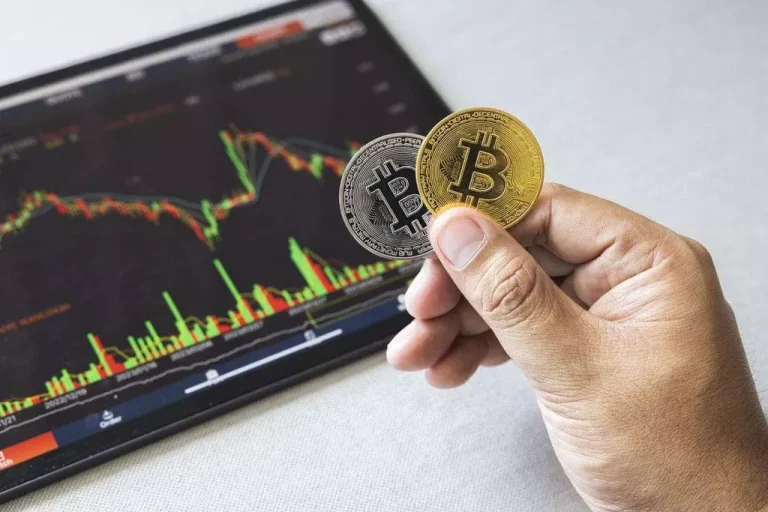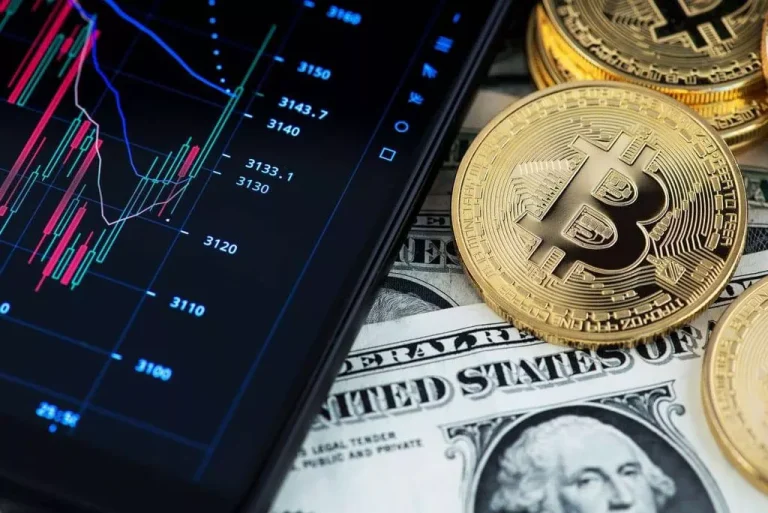An ETF’s liquidity is affected by the securities that it holds, the buying and selling volume of the securities held, the buying and selling volume of the ETF itself, and the investment environment. Understanding how these elements affect an ETF’s liquidity and, due to this fact, how its profitability will enhance outcomes is especially necessary in environments where every cent counts. As a result, bond ETFs will often be composed of fewer securities than the index itself, which may find yourself in higher portfolio administration and price efficiencies. ETFs with very low AUM or low day by day trading averages tend to incur larger buying and selling prices as a result of liquidity barriers. This is an important factor to think about when evaluating funds that will in any other case be comparable in strategy or portfolio content material. Nearly all ETFs present diversification advantages relative to an individual stock buy.
When volatility rises, it puts the highlight on liquidity — the ability to buy or promote a security rapidly, easily, and at a reasonable value. Webull Financial LLC is a member of SIPC, which protects securities customers of its members as a lot as $500,000 (including $250,000 in any money awaiting reinvestment). An explanatory brochure is out there upon request or at Webull Financial LLC’s clearing agency Apex Clearing Corp has purchased a further insurance coverage. The coverage limits provide safety for securities and cash as much as an mixture of $150 million, topic to most limits of $37.5 million for anyone customer’s securities and $900,000 for anyone customer’s cash. Similar to SIPC safety, this additional insurance coverage doesn’t shield towards a loss out there worth of securities. In sum, the more liquid the underlying assets are, the extra liquid an ETF is.
The provide of ETF shares is regulated by way of a mechanism known as creation and redemption, which entails massive specialised investors called approved members (APs). There are additionally actively managed ETFs, wherein etf liquidity risk portfolio managers are extra involved in buying and selling shares of companies and altering the holdings inside the fund. Typically, a more actively managed fund could have a better expense ratio than passively managed ETFs.
In this instance, the AP is in a position to buy ownership of $100 value of stock in trade for ETF shares that it purchased for $99. This course of, called redemption, decreases the availability of ETF shares in the marketplace. Ceterus paribus (all else remaining the same), when the provision of ETF shares is decreased, the value should rise and get closer to its NAV. Because ETFs have become increasingly in style with traders, there are lots of obtainable.
By receiving this communication you agree with the supposed objective described above. Any examples used in this materials are generic, hypothetical and for illustration functions only. Morgan Asset Management, its associates or representatives is suggesting that the recipient or any other particular person take a particular course of action or any motion at all.
Creation And Redemption Fuel Liquidity
Use our screener to identify ETFs and ETPs that match your funding goals.

An ETF’s expense ratio is the cost to function and manage the fund. ETFs typically have low bills as a outcome of they monitor an index—this means there’s only turnover throughout the fund when an organization is faraway from an index. For example, if an ETF tracks the S&P 500 Index, it’d include all 500 shares from the S&P, making it a passively managed fund that’s less time-intensive to manage. However, not all ETFs monitor an index in a passive manner; those that are actively managed might have higher expense ratios. If you’re a starting investor in ETFs, dollar-cost averaging or spreading out your funding costs over a time period is an efficient trading technique. This is as a end result of it smooths out returns over a period of time and ensures a disciplined (as opposed to a haphazard or volatile) strategy to investing.
Etf Liquidity: Best Practices For Environment Friendly Trade Execution
Carefully consider the Funds’ investment objectives, danger elements, and costs and expenses before investing. This and other data could be found within the Funds’ prospectuses or, if obtainable, the summary prospectuses, which can be obtained by visiting the iShares Fund and BlackRock Fund prospectus pages. For index-tracking bond ETFs, BlackRock’s PMs search to trace the efficiency of an ETF’s underlying index as carefully as potential. However, the unique attributes of the bond market can make it difficult for a bond ETF to fully replicate (or hold every single bond) in a bond index, which can embrace hundreds of securities.
- However, the whole liquidity of an ETF additionally consists of the primary market liquidity that the APs facilitate.
- When the market declines, an inverse ETF will increase by a proportionate quantity.
- Many ETFs are open-ended funds, which means they can constantly adapt the number of outstanding shares.
- An explanatory brochure is out there upon request or at Webull Financial LLC’s clearing agency Apex Clearing Corp has bought an additional insurance coverage.
- Redeeming shares of a fund can trigger a tax legal responsibility, so itemizing the shares on an change can maintain tax costs lower.
While buyers do not own the underlying property, they may nonetheless be eligible for dividend funds, reinvestments, and different advantages. Exchange Traded Fund (ETF) An ETF is an open-ended fund that gives exposure to underlying funding, normally an index. Like an individual stock, an ETF trades on an change throughout the day. Unlike mutual funds, ETFs may be offered brief, purchased on margin and sometimes have choices chains attached to them. When volatility hits, market makers are pressured to widen their spreads to incorporate a buffer for the additional market volatility.
Misconceptions About Etf Liquidity
But, there are U.K.-based ETFs that monitor U.S. markets, so long as it has the ‘UCITS’ moniker within the name. Naturally, volatility impacts an ETF’s liquidity profile in both the secondary and primary markets. In specific, stress in the equity and bond markets can result in wider bid-ask spreads for individual funds. When demand decreases, APs redeem ETF shares by reversing this process. But in times of great stress, bond market liquidity usually gums up.

The distinction of being the primary exchange-traded fund (ETF) is commonly given to the SPDR S&P 500 ETF (SPY) launched by State Street Global Advisors on Jan. 22, 1993. There were, nevertheless, some precursors to the SPY, notably securities referred to as Index Participation Units listed on the Toronto Stock Exchange (TSX) that tracked the Toronto 35 Index that appeared in 1990. Another benefit is that ETFs attract no stamp duty, which is a tax levied on strange share transactions within the U.K. Imagine an ETF that holds the shares within the Russell 2000 small-cap index and is at present buying and selling for $99 per share. If the value of the stocks that the ETF holds within the fund is $100 per share, then the ETF is buying and selling at a reduction to its NAV. Concerns have surfaced about the affect of ETFs available on the market and whether demand for these funds can inflate stock values and create fragile bubbles.
As an example, let’s take a look at the ultra-short market since this category does not put money into government securities as its primary objective. Many buyers would think that these securities are very liquid and easy to buy as a outcome of they are traded extra frequently or they mature quicker. Another false impression is that these securities have a very tight trading spread. There are several ways to determine out the liquidity of a fixed income or derivative-based ETF.
Unlike closed-end funds, which have a set variety of shares, open-ended ETFs can adjust their share rely based mostly on demand and provide dynamics. One of the elements contributing to lower returns for ETFs might be their high expense ratio. Typically ETFs have a lower expense ratio, however right here it’s the opposite way around. The table beneath exhibits that ETFs have a better https://www.xcritical.com/ expense ratio than liquid funds. This materials represents an evaluation of the market surroundings as of the date indicated; is subject to change; and isn’t intended to be a forecast of future events or a assure of future results. This info should not be relied upon by the reader as analysis or funding advice relating to the funds or any issuer or safety in particular.
In other words, shares can be “created” or “redeemed” to offset adjustments in demand. ETF creation and redemption is aided by tapping into the liquidity of an ETF’s underlying portfolio of securities. The size of an ETF measured by its belongings beneath management (AUM) likewise doesn’t necessarily dictate its liquidity. Even ETFs with smaller AUM can have high liquidity if they observe a liquid index or sector and have lively APs facilitating the creation and redemption process. While trading quantity can indicate liquidity, it isn’t the entire story. An ETF can have good liquidity even with lower buying and selling volumes because of the creation and redemption mechanisms.
It doesn’t bear in mind any investor’s particular funding goals, strategies, tax status or investment horizon. Options buying and selling entails vital risk and is not acceptable for all traders. Option traders can quickly lose the worth of their investment in a short time frame and incur everlasting loss by expiration date. You need to finish an options trading application and get approval on eligible accounts. Please read the Characteristics and Risks of Standardized Options before buying and selling choices.

Meanwhile, most ETF buying and selling occurs in the “secondary” market, or on-exchange, where buyers buy and sell present ETF shares. The direction of secondary market buying and selling volume on the exchange (i.e., buying or selling pressure) dictates where the ETF trades relative to the worth of its underlying bonds. ETFs depend on a singular creation and redemption mechanism that gives major market liquidity. Authorized individuals (APs) can create or redeem ETFs and trade the “baskets” of the ETF’s underlying securities for model new ETF shares from the fund issuer.

Some ETFs rely on portfolio models which may be untested in several market circumstances and can result in excessive inflows and outflows from the funds, which have a adverse impression on market stability. ETFs trade through each on-line brokers and conventional broker-dealers. Many sources provide pre-screened brokers within the ETF industry, making it simpler to determine on your dealer. One various to straightforward brokers is a robo-advisor like Betterment and Wealthfront, which make intensive use of ETFs in their funding merchandise. For example, some smartphone investing apps allow ETF share purchasing on the faucet of a button.
